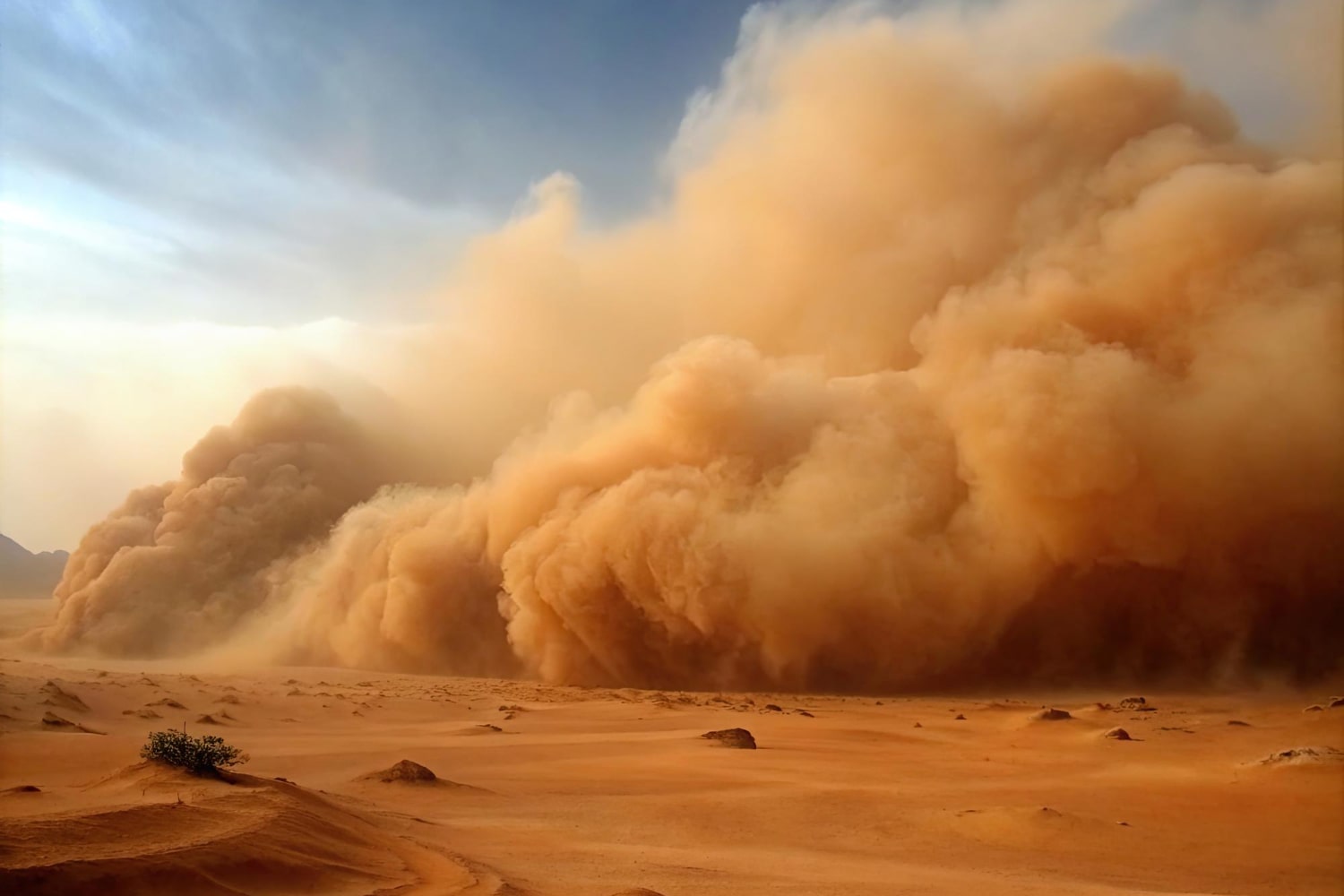Dust storms are among the most dramatic and powerful natural phenomena that can transform entire landscapes within minutes. These storms are driven by strong winds that lift dust and sand particles high into the air, often reducing visibility to near zero. Though typically associated with arid and semi-arid regions, their impact can stretch across continents. Understanding these events provides insight into their environmental and climatic effects. Below is a collection of interesting facts about dust storms that you might not know.
- Dust storms form when powerful winds lift loose dirt and sand from the ground into the atmosphere. The lifted particles can remain suspended in the air for hours or even days. This process is especially common in deserts or areas where vegetation has been removed.
- Wind speeds during dust storms can exceed 100 kilometers per hour, capable of breaking tree branches and downing power lines. The airborne dust can reach several kilometers in height. Some dust clouds grow so large that they can be seen from space.
- The Sahara Desert is the world’s largest source of airborne dust. Each year, nearly 2 billion tons of dust are lifted from the Sahara and carried across the Atlantic Ocean. This transatlantic journey influences weather and marine ecosystems.
- Dust storms are not unique to Earth; they also occur on Mars. Martian dust storms can engulf the entire planet and last for weeks. These storms are a major concern for future human missions due to limited visibility and mechanical interference.
- Airborne dust can pose serious health risks to humans. The fine particles can penetrate deep into the lungs, causing asthma, bronchitis, and cardiovascular issues. Hospitals in dust-prone areas often see spikes in respiratory-related admissions during storms.
- Dust in the atmosphere affects local temperatures. During the day, it can reflect sunlight and cool the surface, while at night it traps heat and warms the air. These shifts can alter local and regional climate patterns.
- In the 1930s, the United States experienced a series of severe dust storms known as the Dust Bowl. Caused by drought and poor farming practices, these storms displaced millions of people. The event is still one of the worst environmental disasters in U.S. history.
- Airborne dust often contains not just soil particles but also bacteria, fungi, pesticides, and industrial pollutants. These contaminants can be transported over vast distances. Studies have linked Saharan dust to meningitis outbreaks in parts of Africa.
- Dust reduces the amount of sunlight reaching the Earth’s surface, which can decrease rainfall and influence plant growth. However, it also brings nutrients like iron and phosphorus, which benefit soil and ocean life. This dual impact makes dust both harmful and helpful.
- Aviation is highly affected by dust storms. The reduced visibility and potential engine damage from fine particles often lead to flight cancellations and airport closures. Pilots must rely heavily on instruments to navigate safely during such conditions.
- In extreme cases, dust clouds can block out sunlight entirely, creating twilight-like conditions during midday. This sudden darkness can cause traffic accidents and panic. Emergency services face significant challenges operating under these conditions.
- Ancient civilizations often interpreted dust storms as signs from the gods or omens of bad fortune. People performed rituals to ward off their destructive power. Today, meteorologists monitor dust storms using satellites and sophisticated forecasting models.
- Dust particles can build up electric charges as they collide in the air, leading to static discharges. In some large storms, observers have reported flashes resembling lightning. These discharges are a sign of intense electrical activity within the dust cloud.
- Dust carried over oceans can contribute to the formation of tropical storms. The particles act as nuclei for water vapor to condense around, promoting cloud development. In this way, dust storms can influence weather systems far beyond their origin.
Dust storms remain one of the most fascinating and complex natural phenomena on our planet. These powerful events show how even the smallest particles can have a huge impact on health, climate, and ecosystems. Learning more about them helps us prepare for and adapt to their effects. The more we study these storms, the better we understand the intricate balance of our environment.





